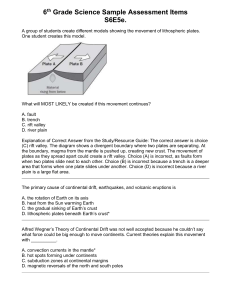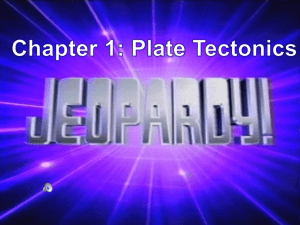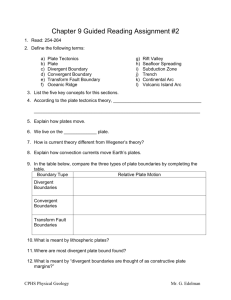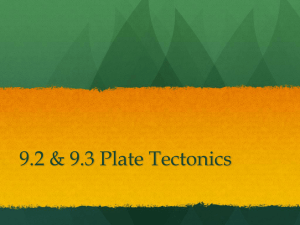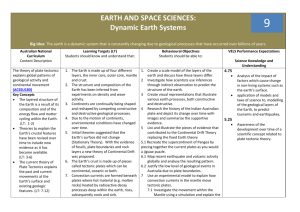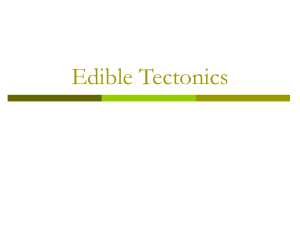17.3-notes-Plate-boundaries
advertisement
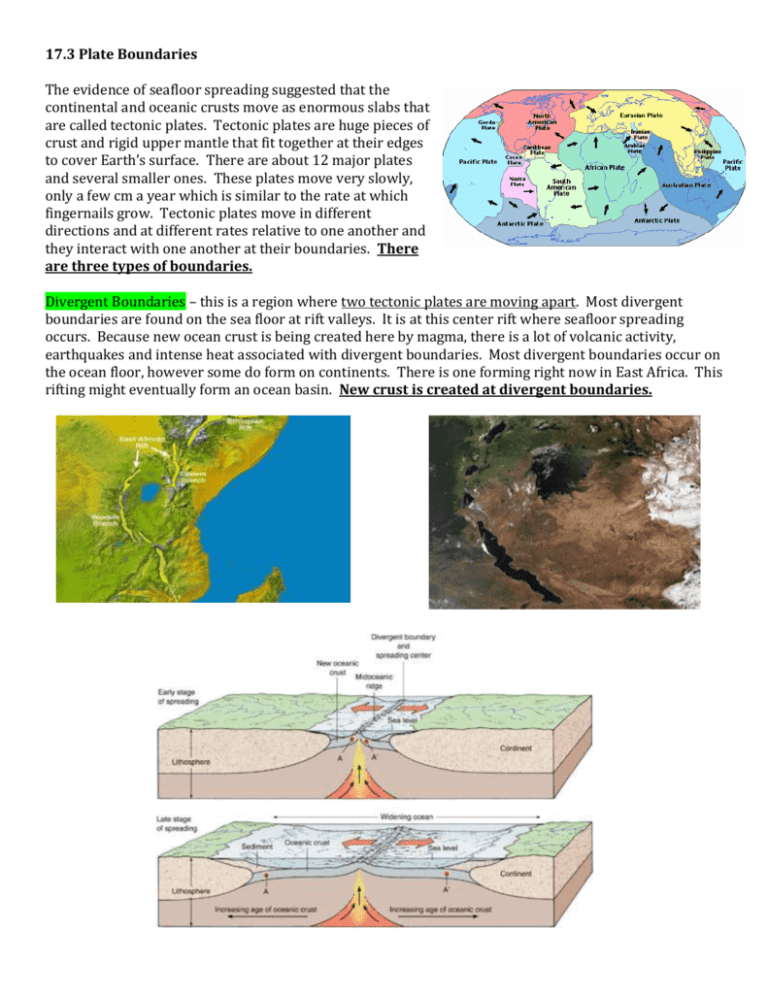
17.3 Plate Boundaries The evidence of seafloor spreading suggested that the continental and oceanic crusts move as enormous slabs that are called tectonic plates. Tectonic plates are huge pieces of crust and rigid upper mantle that fit together at their edges to cover Earth’s surface. There are about 12 major plates and several smaller ones. These plates move very slowly, only a few cm a year which is similar to the rate at which fingernails grow. Tectonic plates move in different directions and at different rates relative to one another and they interact with one another at their boundaries. There are three types of boundaries. Divergent Boundaries – this is a region where two tectonic plates are moving apart. Most divergent boundaries are found on the sea floor at rift valleys. It is at this center rift where seafloor spreading occurs. Because new ocean crust is being created here by magma, there is a lot of volcanic activity, earthquakes and intense heat associated with divergent boundaries. Most divergent boundaries occur on the ocean floor, however some do form on continents. There is one forming right now in East Africa. This rifting might eventually form an ocean basin. New crust is created at divergent boundaries. Convergent boundaries - is where two tectonic plates are moving toward each other and collide. When the two plates collide, the denser plate will descends beneath the less dense plate in a process called subduction. There are three types of convergent boundaries classified according to the type of crust involved. Crust is destroyed at convergent boundaries. Oceanic – oceanic this is when one oceanic plate, which is denser than the other, subducts beneath another oceanic plate. The subduction process creates an ocean trench. The subducted plate descends into the mantle where it will be recycled. During this subduction process, water is also being subducted and this will lower the melting temps of the plates causing it to melt at shallower depths. The magma, which is less dense, will rise back to the surface where it often erupts and forms an arc of volcanic islands that parallel the trench. Oceanic – continental Subduction zones are also found where an oceanic plate converges with a continental plate. The denser plate will subduct. This type of convergence will also produce a trench and volcanic arc. Instead of producing and island arc of volcanoes, it produces a chain of volcanoes along the edge of the continental plate. Therefore, you will get a mountain range with many volcanoes. Continental – continental this is when two continental plates collide. Oceanic crusts often carry continental plates along with it as the move. Over time when the oceanic crust is completely subducted, the continental plate that it was pulling behind it will collide with the continental plate at the subduction zone. The reason the continental plate will not subduct at the subduction zone is because both continental plates have the same density. As a result of this collision, the continental plates will become crumpled, folded, and uplifted to form vast mountain ranges. Transform boundaries – This is a region where two plates slide horizontally past one another. Transform boundaries are characterized by long faults, hundreds of miles long, and shallow earthquakes. Crust is deformed or transformed along a transform boundary.


